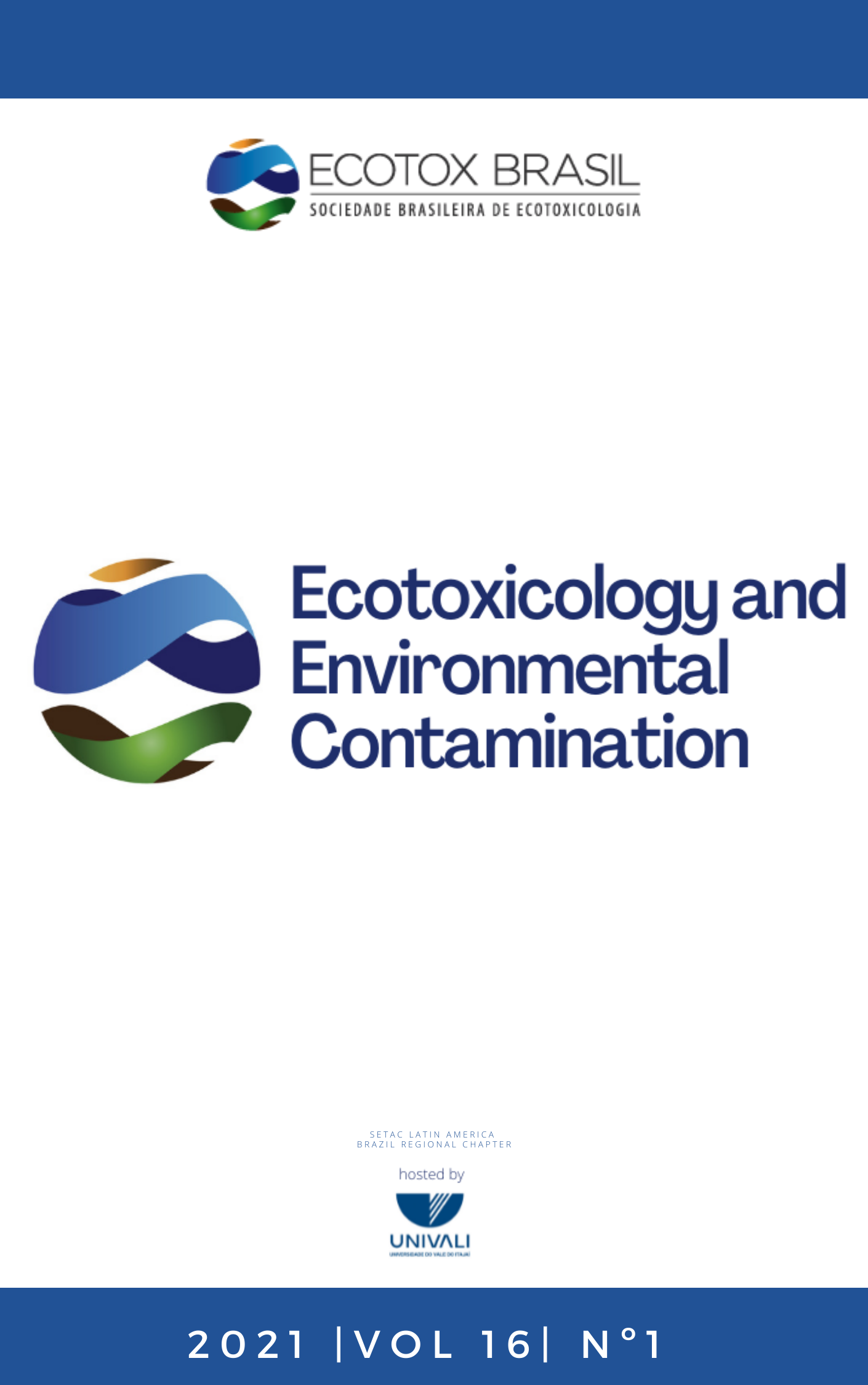Investigating the toxicity of tropical reservoir sediments using the Allium test
DOI:
https://doi.org/10.5132/eec.2021.01.09Abstract
Water pollution is a global environmental issue, and aquatic sediments are important compartments that might act as sinks or sources of contaminants. Once in the environment, inorganic contaminants such as metals can cause cytogenotoxic effects that damage genetic material and harm the aquatic community. Biological assays such as the Allium test can be used to investigate potential cytogenotoxicity of contaminated sediments based on the alterations of cell cycle indexes and chromosomal aberration frequencies. Therefore, we aimed to assess the toxicity of sediments from four Brazilian reservoirs using the Allium test. Sediments were sampled and elutriates were prepared in a simulating sediment resuspension in the water column. The Allium test was applied to the elutriates, and the metals copper, chromium, cadmium, lead, zinc, and iron were quantified. The elutriates derived from reservoir sediments were able to reduce the mitotic and anaphase index, increase the prophase and metaphase index, and boost chromosomal aberrations compared to the negative control. The cytogenotoxic effects observed may be linked to the presence of copper, zinc, and iron. Therefore, our results showed that the Allium test was a sensitive tool for warning the occurrence of genotoxic contaminants in sediment elutriates from four Brazilian reservoirs.
Downloads
Downloads
Published
How to Cite
Issue
Section
License
Copyright (c) 2021 Ecotoxicology and Environmental Contamination

This work is licensed under a Creative Commons Attribution 4.0 International License.
Copyright © 2006 ECOTOX-Brasil
Copyright notice: It is a condition for publication that manuscripts submitted to this journal have not yet been published and will not be simultaneously submitted or published elsewhere. By submitting a manuscript, the authors agree that copyright for their article is transferred to the Sociedade Brasileira de Ecotoxicologia (ECOTOX-Brasil) if and when the article is accepted for publication. The copyright covers the exclusive rights to reproduce and distribute articles, including reprints, photographic reproductions or any other reproduction of a similar nature, including translations. No part of this publication may be reproduced, stored in a retrieval system or transmitted in any form or by any means, electronic, mechanical, photocopying, recording or otherwise, without permission of the publisher.
Notice: While every effort is made by the EEC, editors and editorial board to see that no inaccurate or misleading data, opinions or statements appear in this journal, they wish to make it clear that the contents of the articles and advertisements published herein are the sole responsibility of the contributors or advertisers concerned. Accordingly, the EEC, the editorial board and editors and their respective employees, officers and agents accept no responsibility or liability whatsoever for the consequences of any inaccurate or misleading data, opinion or statement.




